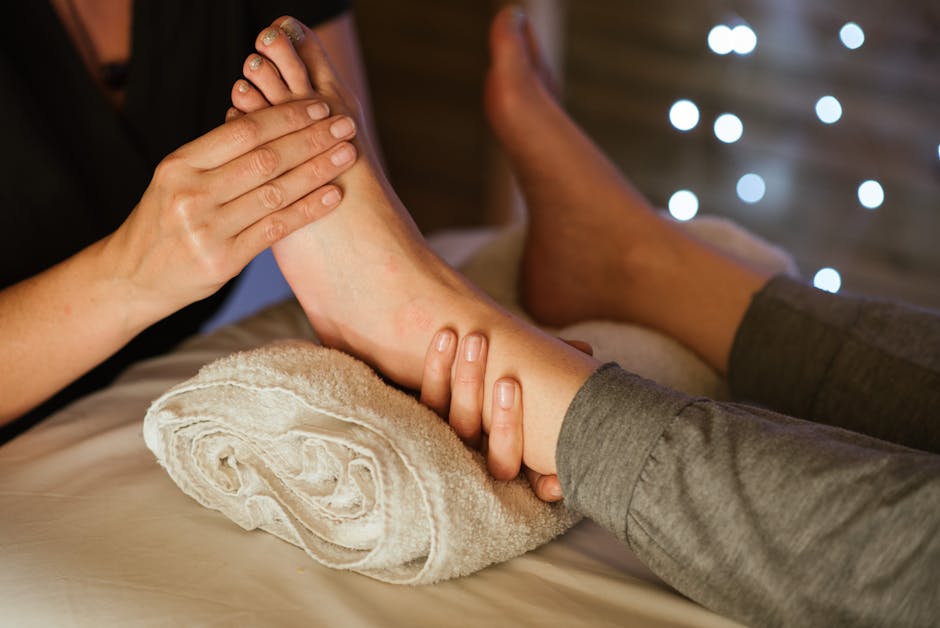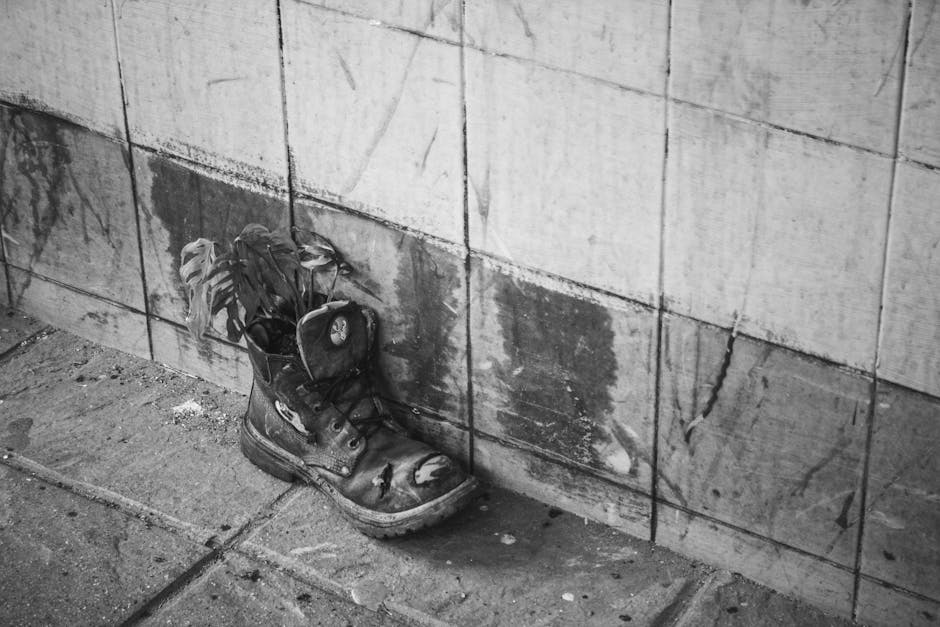How to repair inside heel of shoe:
- Prepare: Remove insert and clean area.
- Glue: Use flexible glue to attach durable cloth (e.g., denim).
- Stitch: Secure top edge with needle and strong thread.
Have you ever noticed that the inside heel of your favorite athletic shoes wears out faster than the rest of the shoe? It’s a common problem, but don’t worry—how to repair inside heel of shoe is easier than you might think. In this guide, we’ll detail simple, effective methods to restore your shoes’ heel, using easy-to-find materials and basic sewing skills. These tips will not only save you money but also extend the life of your beloved footwear, contributing to a more sustainable lifestyle.
I’m Eric Neuner, founder of NuShoe Inc., America’s premier shoe repair service. Since 1994, we’ve transformed millions of shoes to their former glory, and I’m here to show you how to do it yourself with ease.
Let’s get started!

Why Do Shoes Wear Out on the Inside Heel?
If you’ve ever wondered why the inside heel of your shoes wears out faster than the rest, you’re not alone. This common issue can be traced back to several factors, including foot deformities, the way your heel tips when you walk, and even having flat feet.
Foot Deformities
Foot deformities, such as bunions or hammertoes, can significantly impact how your shoes wear out. These conditions often cause your foot to rub against the shoe in unusual ways, leading to faster wear and tear on the inside heel. According to a study by the American Podiatric Medical Association, foot deformities affect approximately 24% of adults, making this a widespread issue.
Heel Tips In
When your heel tips inward (also known as overpronation), the inside edge of your heel makes more contact with the shoe. This constant friction accelerates the wear on the inside heel. Overpronation is common among people with flat feet, which brings us to our next point.
Flat Feet
Flat feet lack the natural arch that helps distribute weight evenly across your foot. As a result, people with flat feet often overpronate, causing excessive wear on the inside heel of their shoes. According to the Mayo Clinic, flat feet are a common condition that can lead to various foot and ankle problems if not addressed.
Heel Tips Out
On the flip side, if your heel tips outward (known as supination), the outer edge of your heel will bear more weight. While this might seem like it would protect the inside heel, the imbalance can still lead to uneven wear patterns. Supination is less common but can be just as problematic.
Understanding these factors can help you take steps to prevent excessive wear on the inside heel of your shoes. Whether it’s investing in custom orthotics or practicing specific foot exercises, addressing these underlying issues can extend the life of your footwear.

Next, we’ll dive into the nitty-gritty of how to repair the inside heel of shoe to keep your favorite pair in top-notch condition.
How to Repair the Inside Heel of Your Shoes
Step 1: Preparing the Shoe
First things first, you’ll need to remove the insert from your shoe. This gives you a clear view and access to the worn-out area. Make sure to clean the area thoroughly. Use a damp cloth to wipe away any dirt or debris. Let it dry completely before moving on to the next step.
Now, gather your materials. You’ll need a flexible glue—one that’s designed for shoe repairs works best. This type of glue will move with your foot, preventing cracks and breaks.
Step 2: Applying the Patch
Next, cut a piece of durable cloth to cover the damaged area. The cloth should be sturdy but not too thick. Denim from an old pair of jeans is a great option.
Apply a thin layer of the flexible glue to the cloth and the shoe’s heel area. Press the cloth onto the heel and hold it in place for a few minutes to ensure it sticks well.
For extra security, stitch the top edge of the cloth. Use a curved needle if you have one, but a regular needle will also work. Make sure to use strong thread to prevent future wear and tear. Stitching helps keep the cloth in place and adds durability.
Step 3: Alternative Methods
If sewing isn’t your thing, there are other options. Self-adhesive patches are a quick and easy fix. Simply peel and stick the patch over the worn area. These patches are designed to withstand friction and are a popular choice among DIY shoe repair enthusiasts.
Another option is moleskin. Cut a piece to fit the damaged area, peel off the backing, and stick it on. Moleskin is soft and durable, making it a comfortable choice.
Duct tape is a more temporary solution but can work in a pinch. Wrap the tape around the heel area, making sure it sticks well. This method isn’t as durable but can get you through until you find a more permanent fix.
For a quick and easy repair, Band-Aid Flexible Fabric strips can also be used. Center the gauze part over the hole and press down firmly. This is a good short-term solution, especially if you’re on the go.
By following these steps, you can extend the life of your favorite shoes and keep them comfortable for longer. Next, let’s explore some common issues and solutions to keep your shoes in top shape.
Common Issues and Solutions
Peeling Lining
Peeling lining is a common problem that can make your shoes uncomfortable and look worn out. Fortunately, it’s easy to fix.
Materials and Tools:
– Duct tape
– Adhesive patches
Steps:
1. Clean the Area: Make sure the inside heel is clean and dry.
2. Apply Duct Tape or Adhesive Patch: Cut a piece of duct tape or an adhesive patch to fit the peeling area. Smooth it down firmly.
Using duct tape can provide a quick fix, but adhesive patches designed for shoe repair will last longer.
Collapsed Heel Collar
A collapsed heel collar can cause discomfort and even blisters. Fixing it can restore the structure of your shoe.
Materials and Tools:
– Repair kits
– Foam inserts
Steps:
1. Insert Foam: Place foam inserts inside the heel collar to provide support.
2. Use a Repair Kit: Some kits come with special adhesives and materials to rebuild the heel collar.
Foam inserts are great for immediate relief, while repair kits offer a more permanent solution.
Bent Heel Cup
A bent heel cup can affect the fit and support of your shoe. Fixing it requires some sturdy materials and a bit of patience.
Materials and Tools:
– Nylon
– Duck cotton
– Fine stitches
Steps:
1. Cut Nylon or Duck Cotton: Cut a piece of nylon or duck cotton to fit the bent heel cup.
2. Stitch in Place: Use fine stitches to attach the material securely.
Using durable fabrics like nylon or duck cotton, along with fine stitching, can restore the shape and support of the heel cup.
By addressing these common issues, you can keep your shoes in peak condition and extend their lifespan. Now, let’s answer some frequently asked questions about repairing the inside heel of shoes.
Frequently Asked Questions about Repairing Inside Heel of Shoes
How do you fix the inside heel of a shoe?
Fixing the inside heel of a shoe can be simple and effective. Here’s a straightforward method:
-
Remove the Insert: Take out the shoe insert to access the damaged area.
-
Clean the Area: Make sure the inside heel is clean and dry.
-
Apply Glue: Use a flexible glue designed for shoes. Apply it to the damaged area.
-
Attach Durable Cloth: Cut a piece of durable cloth, like denim or nylon, to fit the area. Press it firmly onto the glue.
-
Stitch the Top Edge: Use a needle and strong thread to stitch the top edge of the cloth. This prevents it from peeling off.
This method ensures a durable repair that can extend the life of your shoes.
Can the inside lining of shoes be repaired?
Yes, the inside lining of shoes can be repaired. Here are a few methods:
-
Backlining Replacement: If the lining is severely damaged, consider replacing it entirely. A shoe repair shop can handle this for you, stitching in a new leather layer or another durable material.
-
Adhesive Patches: For minor damage, self-adhesive patches work well. These patches are easy to apply and provide a quick fix.
-
Moleskin: This soft, adhesive fabric is often used to prevent blisters but can also repair worn shoe linings. Cut a piece to size and stick it over the damaged area.
These options can restore comfort and extend the life of your shoes.
How to fix shoes that are peeling inside?
Shoes peeling inside can be annoying, but they are fixable. Here’s how:
-
Duct Tape: Surprisingly effective, duct tape can be a quick fix. Cut a piece to cover the peeling area and press it down firmly.
-
Adhesive Patches: These patches are designed for shoe repairs and can provide a more permanent solution. Stick them over the peeling area.
-
Flexible Fabric Band-Aids: As mentioned in user experiences, flexible fabric Band-Aids can also work. They adhere well and provide a smooth surface.
Using these methods, you can stop the peeling and make your shoes comfortable again.
By leveraging these tips and methods, you can tackle common shoe repair issues and keep your footwear in great shape.
Conclusion
Repairing the inside heel of your shoes not only saves you money but also promotes sustainability by extending the life of your footwear. At NuShoe, we believe in the power of handcrafted shoe renewal. Our expert craftsmen have repaired over 4 million pairs of shoes since 1994, and we take pride in bringing your favorite footwear back to life.
By opting for repairs instead of replacements, you’re contributing to a more sustainable future. Fewer discarded shoes mean less waste, and every repair is a step towards reducing your environmental footprint.
Handcrafted shoe renewal isn’t just about fixing a problem; it’s about preserving the stories and memories tied to your shoes. Whether it’s a pair of boots that have walked countless miles or sneakers that have seen many marathons, repairing them can make them as good as new.
So, the next time you find yourself wondering how to repair the inside heel of a shoe, you have options. Whether you choose to DIY with some denim and glue or seek professional help from NuShoe, you’re making a wise and eco-friendly choice.
Ready to give your shoes a new lease on life? Check out our expert shoe repair services and take the first step towards sustainable footwear today.
